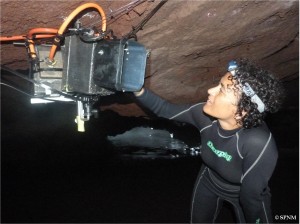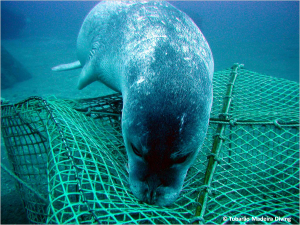Actions will be focused on improving the monk seal’s current situation in the archipelago, as well as developing a conservation status surveillance system for the species and its habitat.
The main actions are summarised as follows:
– Locating, defining, and protecting the caves that are of interest to the species on the island of Madeira and the Desertas Islands:
Knowledge about the sites used by monk seals is vital for defining a strategy for protecting them and developing the necessary mechanisms and indicators for conserving these spots and the species in the long term.
– Creation of an information, emergency, and rapid intervention network (monk seal SOS network):
The aim of this network is to improve the protection of the species and allow the Madeira Natural Park Service to respond quickly to any threat or danger faced by monk seals.
– Boarding fishing and maritime-tourism boats to reduce threats, disturbances, or any other negative interaction with monk seals:
This will be done with the aim of minimising potential conflict between fishermen and monk seals. It will also enable information to be gathered on fishing techniques that cause conflict with the species, as well as the detection of fishing zones that encroach on monk seal feeding areas.
Work will also be done with tourism operators (scuba diving clubs and cetacean watching companies, etc.) to reduce disturbances and inappropriate conduct around monk seals, as well as to apply the regulations on observing marine vertebrates in Madeira.
– Implementation of non-invasive systems for monitoring monk seals via satellite: 
The aim is to find out more about their movement patterns and distribution and feeding areas at sea, as well as identify sites with human activity that are frequented by the seals (in these places it will also be necessary to apply the regulations on observing marine vertebrates in Madeira).
– Establishment of a protocol for monitoring the conservation status of the species and its habitat in Madeira:
This protocol will be based on several indicators, such as the demography of the population, the use of terrestrial (caves and beaches) and marine habitat, and detected interactions or threats relating to the species.










